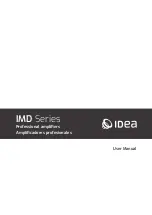
22
5
.
Supervision
“Supervision” is used to enable or disable the supervision functions, and the requisite parameter
for check as shown below
:
Supervision Options
Through the software, users can set the fault supervision for the AC Power, DC Power,
Communication and Speaker Line as enabled or disabled.
Line Supervision Setting
If Line impedance is enabled, users can respectively enable/disable the line supervision function of
speaker lines and set the line tolerance parameters. When the line impedance is lower than the
lower limit, a short circuit will be found in the speaker line. When the impedance is higher than
upper limit, an open circuit will be found in the speaker line. Here the unit of impedance tolerance
is shown with percentage. The default monitor type is line impedance. If using end-of-line modules,
EOL monitoring should be selected.
Select a line, and click the
icon in the right of the Line Supervision Setting list, the rest of
parameters can be set as the same as the selected one
’s.
Modules Supervision
The modules connected with X-EOL or digital noise detector X-ND100 can be supervised. The
check-boxes are used to enable or disable line supervision. Check box which shown as
means enable, and
means disable.
Line Check Interval Time
This item is used to set the measurement period of speaker line impedance. The value ranges
from 10~1800s.
Dry Contact Input Supervision
If the dry contact inputs are connected with the third-party devices, the transmission line can be
supervised. This function can be configurable. Every line of the device should be installed with 10K
ohmic resistances to make sure the detection correct.
Amplifier Supervision
Device fault and loop fault of amplifier can be set separately. Device fault means the fault of
amplifier device, such as power fault or protection. Loop fault describes audio signal transit to
















































